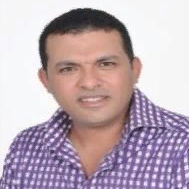
M.A. Mohamed
Work place: Communication and Electronics, Faculty of Engineering, Mansoura University, Egypt
E-mail: mazim12@yahoo.com
Website:
Research Interests: Multimedia Information System, Information Systems, Computer systems and computational processes
Biography
M. A. Mohamed received the Ph.D. degree in Electronics and Communications Engineering from the Faculty of Engineering - Mansoura University - Egypt by 2006. After that he worked as an assistant professor at the electronics & communications engineering department, He had awarded the best Ph.D. thesis at Mansoura University at 2007. Then awarded the associate professor degree in 2012 , research interests are in multimedia processing, wireless communication systems, and field programmable gate array (FPGA) applications. Now he is a professor and chairman at the Electronics and Communications Department in Mansoura University since 2017. He has 150 publications in various international journals and conferences. His current research interests are in multimedia processing, wireless communication systems, and field programmable gate array (FPGA) applications.
Author Articles
Evaluation of Reconstructed Radio Images Techniques of CLEAN De-convolution Methods
By M.A. Mohamed A.H. Samrah Q.E. Elgamily
DOI: https://doi.org/10.5815/ijigsp.2018.10.03, Pub. Date: 8 Oct. 2018
In Modern Radio Interferometry Various Techniques have been developed for the Reconstruction of the high-dimensional Data scalability Radio Images. CLEAN Variants are widely used in Radio Astronomy because of its computationally efficiency and easiness to understand. CLEAN deconvolves different polarization component images independently and nonlinearly from the point source response by removing the dirty beam pattern form the images. CLEAN Algorithms have been evaluated in this paper for both single field "Deconvolution" (Hogbom, Clark, Clark Stokes, and Cotton Schwab) and multi-field "Deconvolution" (Multi Scale, Multi Frequency and Multi Scale Multi frequency). Based upon simulation results, it is clear that more updated techniques are needed for Large radio telescopes to face big data, extended sources emissions and fast imaging issues which are using dimensionality reduction from the perspective of the compressed sensing theory and to study its interplay with imaging algorithms which are designed in the context of convex optimization combined with sparse representations.
[...] Read more.Other Articles
Subscribe to receive issue release notifications and newsletters from MECS Press journals